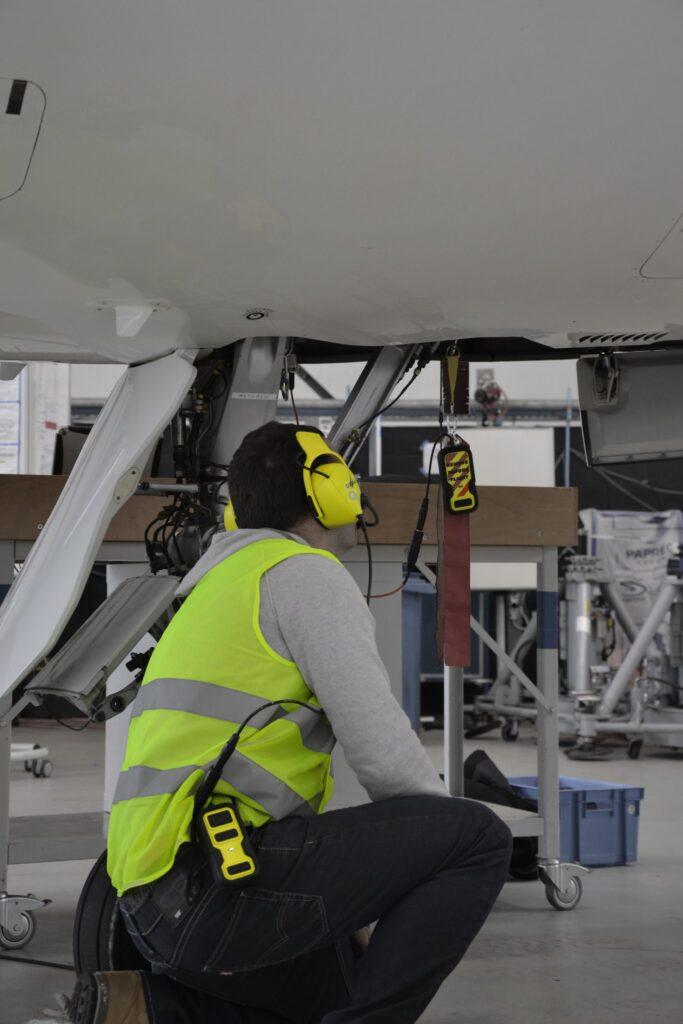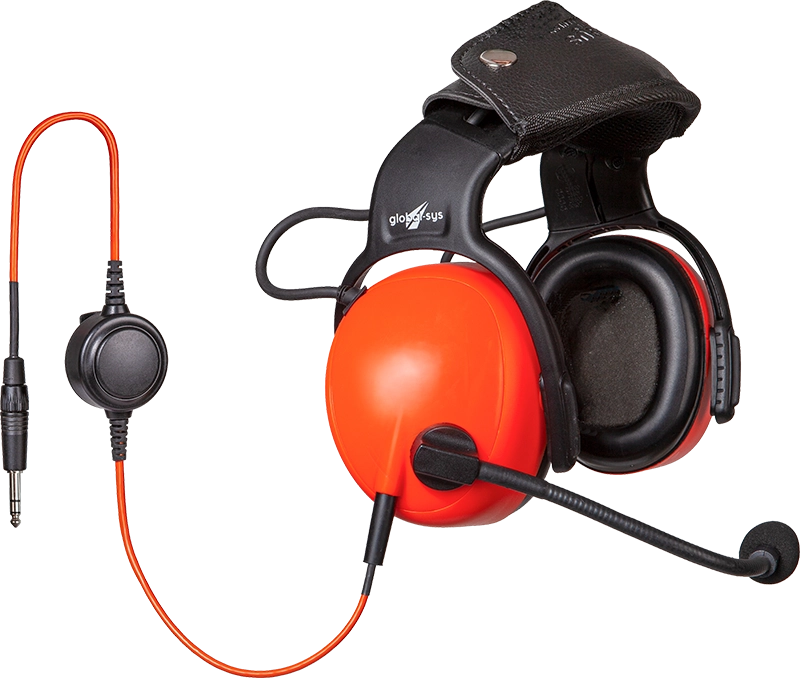In critical environments such as industrial facilities, secure buildings, and aviation operations, communication is a non-negotiable component of safety and efficiency. Among the essential tools for this communication are intercom systems. These systems must be reliable and always operational to ensure seamless interaction between teams, departments, and security staff. When a failure occurs, it can result in costly downtime, security vulnerabilities, or operational delays.
That’s why knowing how to repair intercom systems is crucial for technicians, maintenance managers, and industrial procurement professionals. With the right knowledge and tools, many intercom issues can be diagnosed and fixed internally, without needing to wait for external support.
Understanding how intercom systems work
Before diving into intercom repair, it’s essential to understand the components and operation of an intercom system. A typical system includes:
- Master units: The primary control panel that can communicate with all sub-units.
- Substations or slave units: Remote stations located throughout the facility.
- Handset: Used for communication; check the handset’s wiring and connections if issues arise.
- Wiring or wireless transmitters: Depending on the system architecture. Inspect wires for any loose, damaged, or improperly installed connections.
- Power supply: A dedicated power source or shared via PoE (Power over Ethernet). Some intercoms have their power source located inside the house, which can affect wiring setup.
- Audio modules and speakers: Transmit and receive sound.
There are two main types of intercom systems:
- Wired intercom systems: These are traditionally used in permanent installations where cables can be run easily. A wired system offers more stability and less susceptibility to interference. When troubleshooting, check the wires for damage or loose connections, and verify that the system is receiving power by inspecting the circuit breaker or fuse box.
- Wireless intercoms: Often used in temporary or hard-to-cable environments. They provide flexibility but can face connectivity issues and radio interference. Ensure the batteries are charged or replaced, and check the charging port to resolve power issues.
After installation, configure the system settings to optimize performance and ensure proper functionality.
Common intercom issues and symptoms
Diagnosing issues starts with identifying common problems. Some of the most frequent symptoms in intercom troubleshooting include:
- No audio transmission: Total silence on one or both ends of the communication. A simple wiring issue can cause the system to stop working and may be easy to fix.
- Crackling or distorted sound: Indicates faulty wiring or damaged speakers.
- Unstable power supply: Units randomly turning off or rebooting.
- Weak signal or range limitations (in wireless systems).
- Delay or echo during communication.
- Physical damage to control panels or wall stations.
These audio problems or signal anomalies are often the first indicators that a communication device needs attention. After addressing basic issues, always check that all components work properly to ensure reliable operation.
Step-by-step intercom troubleshooting methodology
When learning how to repair intercom systems, a structured approach to diagnose and troubleshoot is key. Here’s a step-by-step troubleshooting guide:
- Visual inspection
- Check cables for signs of wear, fraying, or damage.
- Inspect connectors, ports, and terminals for corrosion or looseness.
- Verify that units are properly mounted and not obstructed.
- Power check
- Use a multimeter to verify voltage at each intercom station.
- Confirm the main power supply is functional.
- Inspect fuses and power regulation boards.
- Wiring tests
- Use a line tester or continuity tester to validate cable runs.
- Look for short circuits, grounding faults, or broken conductors.
- Audio tests
- Test microphones and speakers individually by swapping with known working units.
- Listen for distortion or low volume issues.
- Set and test the correct audio parameters, such as volume and channel, to ensure optimal performance.
- Connectivity tests (for wireless intercoms)
- Ensure all devices are on the same frequency or network channel.
- Move wireless units closer together to rule out signal range issues.
- Update firmware if the system supports it.
- Module isolation
- Disconnect each subsystem or extension one at a time to isolate the fault.
- Test each module independently.
- If the issue persists after isolating modules, you may need to replace faulty components such as power supplies, keypads, or units.
- Diagnostic interface (if available)
- Some advanced intercom systems provide software interfaces or diagnostic tools. Use these to retrieve error codes and logs.
- Always consult the manual for your specific intercom system for model-specific troubleshooting steps.
A systematic approach like this helps diagnose issues efficiently and ensures you troubleshoot and resolve problems with your intercom system effectively.
Door Release Mechanism Repair
The door release mechanism is a vital part of any intercom system, serving as the gateway for secure access control within a building. When this component malfunctions, it can disrupt both communication and security, making prompt repair essential. Common issues with the door release mechanism often stem from loose or damaged wiring, faulty power supplies, or worn-out parts that can prevent the door from unlocking or locking as intended.
To ensure the release mechanism is functioning properly, regular inspection and maintenance are crucial. Look for visible damage, test the wiring connections, and verify that the power supply is stable. If you encounter issues, always consult the intercom system’s manual and follow the manufacturer’s guidelines for troubleshooting and repair. Some repairs may require specialized tools or technical expertise, so don’t hesitate to consult a professional if the problem is complex or if enhanced security features are involved.
Modern intercom systems often include advanced door release mechanisms with features like keyless entry or biometric authentication, further enhancing building security. Keeping these systems in top condition not only ensures seamless communication but also maintains a secure environment for all occupants. Remember, a fully operational door release mechanism is essential for the overall functionality and security of your intercom system.
Common repairs and solutions
Once the issue has been diagnosed, here are the most frequent solution strategies for intercom systems:
- Replacing damaged wiring: One of the simplest but most overlooked repairs. Always use shielded cables to prevent interference.
- Fixing power issues: Replacing fuses, power adaptors, or voltage regulators can solve intermittent shutdowns.
- Replace faulty modules: Whether it’s a speaker, mic, or control board, replace the defective unit to restore full function.
- Resolving connectivity issues: In wireless intercoms, switching channels, updating firmware, or replacing antenna modules may help.
- Software updates: Some newer systems allow OTA (over-the-air) firmware updates that fix bugs and improve performance.
- Eliminating interference: If two systems are operating on overlapping frequencies, coordinate channels or add shielding to resolve the issue.
If these steps don’t resolve the problem, it’s time to consult the manufacturer or a certified technician. For persistent or complex issues, a professional can accurately diagnose the root cause and recommend the most effective solution. This is especially important in integrated security systems where downtime can create compliance or safety risks. For further assistance, contact the manufacturer or a certified technician.
Advanced Diagnostic Tools
Advanced diagnostic tools have become indispensable for troubleshooting and repairing today’s sophisticated intercom systems. These tools provide in-depth insights into system performance, allowing technicians to pinpoint issues with power supplies, wiring connections, and other critical components quickly and accurately. Many intercom system manufacturers offer specialized diagnostic software and hardware kits designed to streamline the troubleshooting process.
By regularly using advanced diagnostic tools, you can proactively identify and resolve common intercom issues such as damaged wiring, faulty power supplies, or malfunctioning release mechanisms. These tools are also invaluable for detecting potential security vulnerabilities, helping you protect your intercom system from threats and ensure reliable communication throughout the building.
When working with advanced diagnostic tools, always follow the manufacturer’s instructions and take necessary precautions to avoid causing further damage to the system. These tools can be used to test and inspect a wide range of components, from wiring connections to the door release mechanism, and can even provide targeted solutions for specific intercom systems, such as the AIPhone MCL model.
Staying up to date with the latest diagnostic technologies and receiving regular training is essential for effective troubleshooting and repair. By leveraging these advanced tools, technicians can deliver faster, more accurate solutions, minimizing downtime and maintaining the high performance and security of your intercom system.
System Upgrades and Replacement
Upgrading or replacing your intercom system can significantly enhance building security, improve communication, and boost overall system performance. Modern intercom systems offer a range of enhanced security features, such as video surveillance, keyless entry, and biometric authentication, which can provide greater peace of mind for building management and occupants alike.
When considering an upgrade or replacement, it’s essential to consult with a professional to assess your current system and determine the best path forward. Factors such as compatibility with existing infrastructure, scalability for future needs, and the ability to address common intercom issues like damaged wiring or unreliable power supplies should all be taken into account.
Regular maintenance and inspections can help identify when your intercom system is due for an upgrade or replacement, allowing you to take proactive steps before problems escalate. A professional assessment can ensure a seamless transition, whether you’re upgrading to a system with advanced features or replacing outdated equipment for improved reliability and performance.
Investing in system upgrades or replacement not only resolves persistent issues but also strengthens the overall security and communication framework of your building. Regular reviews and assessments will help you identify opportunities for improvement, ensuring your intercom system continues to meet the evolving needs of your facility.
Preventive maintenance and best practices
Proactive maintenance can greatly reduce repair frequency and extend the lifespan of your communication devices. Here are some best practices:
- Regular system checks: Perform several actions routinely, such as testing, cleaning, and updating each unit to verify sound, power, and connection.
- Scheduled cleaning: Dust and moisture can degrade audio performance and corrode terminals.
- Surge protection: Use surge protectors to shield systems from power spikes.
- Firmware updates: Check regularly for software patches or security upgrades.
- Keep documentation: Maintain repair logs and technical manuals for each system.
Learning how to repair intercom systems is an invaluable skill for anyone involved in facility management or technical support. Intercom systems are foundational to security and coordination in demanding environments—and timely maintenance and repairs can prevent cascading failures.
By understanding system architecture, recognizing early warning signs, and applying structured troubleshooting techniques, most issues can be resolved without delay. Whether you’re managing a warehouse, a production site, or an airport ground crew, keeping your intercom systems operational should be a top priority.
For further guidance, visit our website for more resources and support, explore our intercom product pages, review our technical installation guides, or learn more about our wireless intercom solutions designed for industrial environments.
Common Mistakes to Avoid
When troubleshooting or repairing intercom systems, avoiding common mistakes is key to maintaining optimal performance and security. One frequent oversight is neglecting to check the power supply and wiring connections, which are often the root cause of many common intercom issues. Always ensure these components are functioning properly before moving on to more complex diagnostics.
Another mistake is failing to consult the intercom system’s manual or follow manufacturer guidelines, which can lead to improper repairs and further complications. Regular maintenance and inspections are essential—ignoring them can result in issues like damaged wiring, faulty power supplies, or a malfunctioning door release mechanism, all of which can compromise building security.
Using incorrect or damaged tools during repairs can cause additional harm to the system, so always use the right equipment and seek professional expertise when needed. It’s also important to thoroughly test and inspect all components, including wiring connections and the release mechanism, to avoid missed diagnoses.
When upgrading or replacing your intercom system, consider compatibility and scalability to ensure long-term performance. Failing to consult a professional can result in suboptimal solutions and ongoing issues. Additionally, overlooking potential security vulnerabilities can put your building at risk, so always prioritize proactive security measures.
Finally, keep detailed records of all maintenance, repairs, and upgrades. This documentation will help you track the system’s history, identify recurring issues, and plan for future improvements, ensuring your intercom system remains secure, reliable, and effective.







